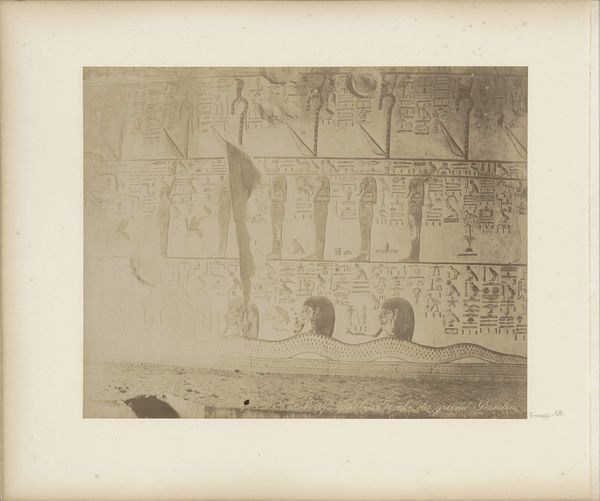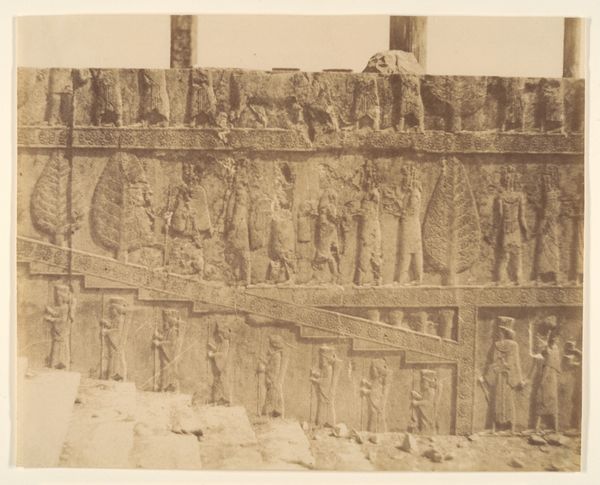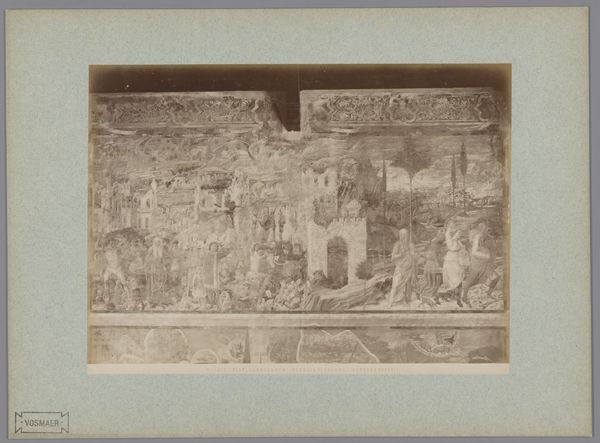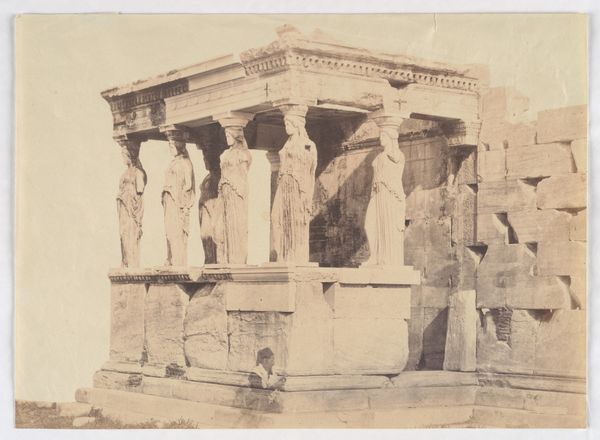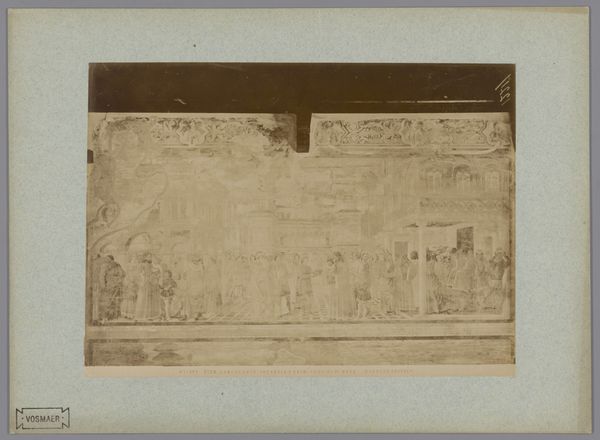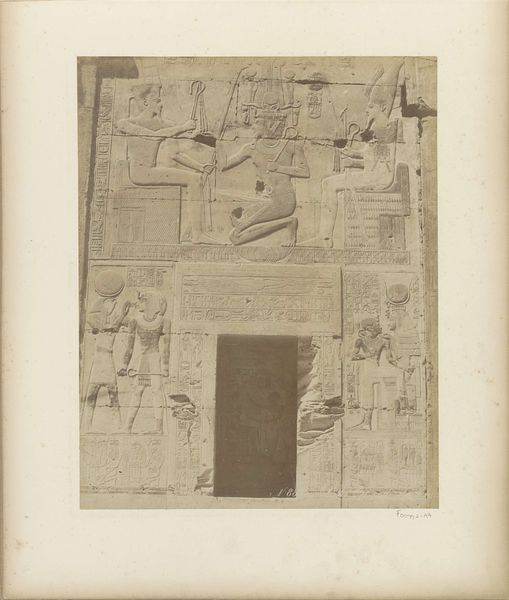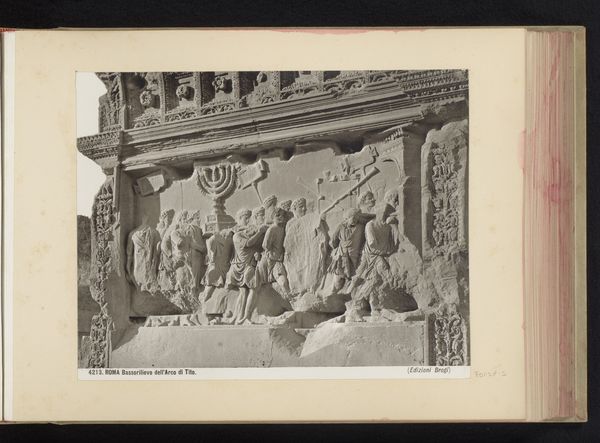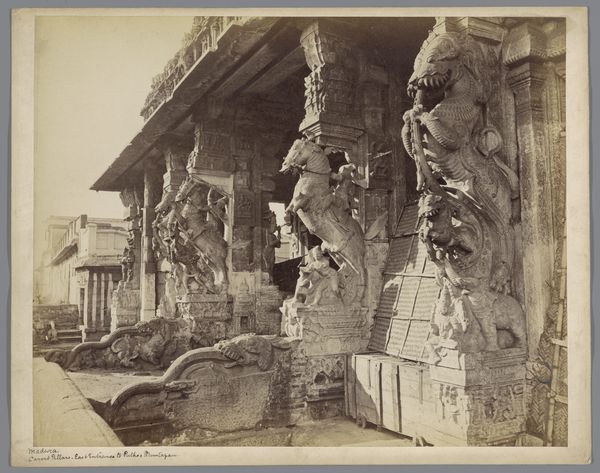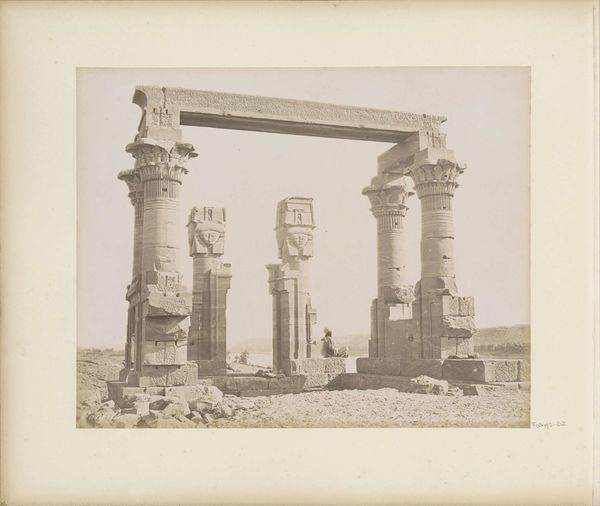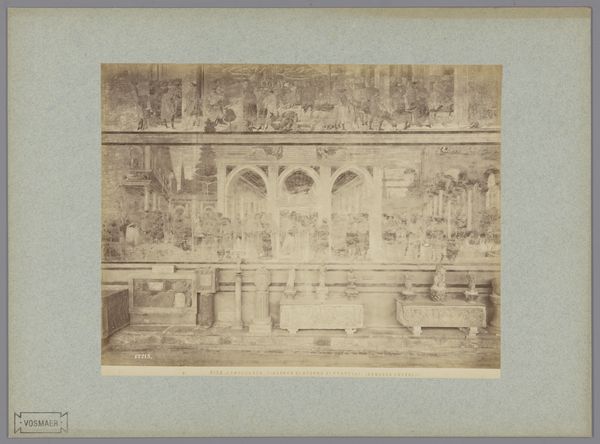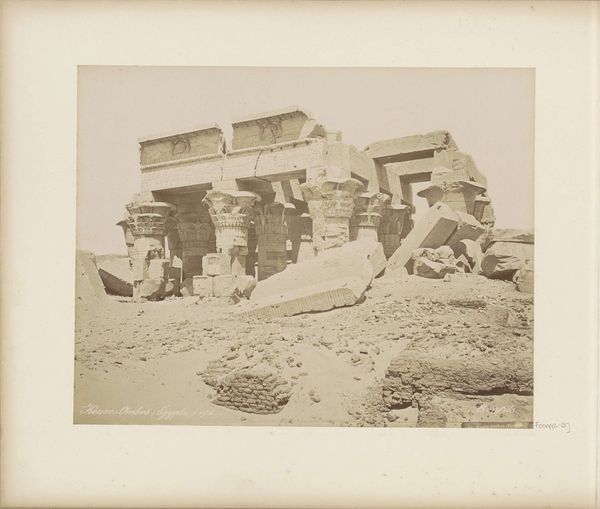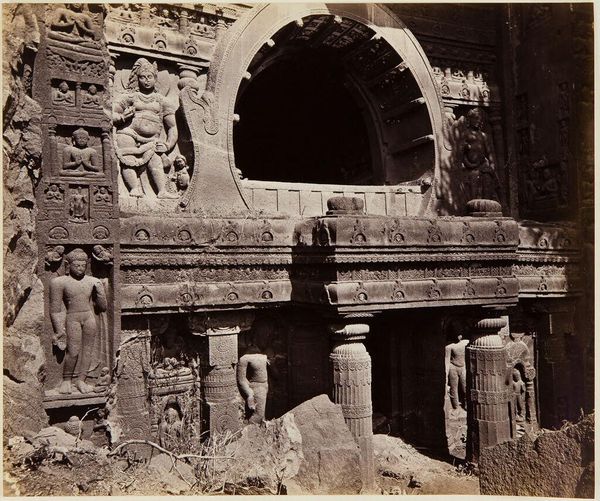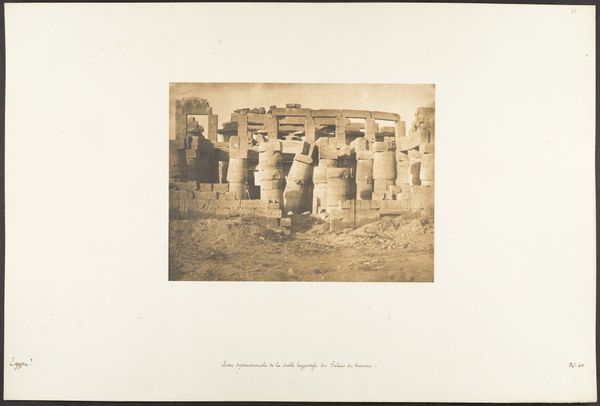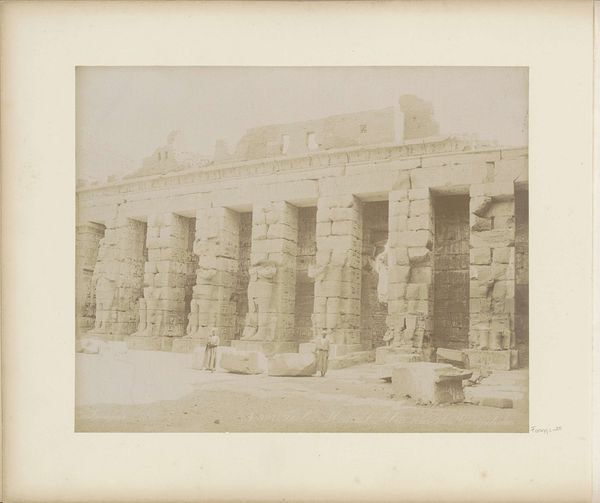
Reliëf op de Boog van Titus voorstellende voorwerpen die als krijgsbuit worden meegevoerd uit de Tempel van Jeruzalem, Rome, Italië 1851 - 1900
0:00
0:00
print, relief, photography, gelatin-silver-print
#
narrative-art
# print
#
greek-and-roman-art
#
relief
#
photography
#
ancient-mediterranean
#
gelatin-silver-print
#
history-painting
Dimensions: height 227 mm, width 317 mm
Copyright: Rijks Museum: Open Domain
Curator: The weight of history feels almost palpable in this gelatin-silver print, a photograph dating from between 1851 and 1900. Ludovico Tuminello captured a section of the Relief on the Arch of Titus. Editor: Wow, you can almost hear the echoes of Roman triumph. It's powerful, but in a melancholy way. The monochrome adds a starkness, highlighting the plunder but also the loss. What really strikes me is how much wear and tear the relief shows; time's heavy hand, wouldn't you say? Curator: Absolutely. That visible erosion amplifies its historical resonance, almost a collaboration between artist and time. The photograph allows us to examine details that a simple viewing of the arch itself might miss. I am interested in the ways we can decode that kind of historic propaganda. Editor: That seven-branched menorah looms so large. You immediately know this isn't just a random parade; this is the taking of the Temple in Jerusalem. What I wonder is, what kind of emotional response was it meant to trigger then, and what sort of emotions do these kinds of historic trophies and symbol of cultural violation stir now? Curator: Precisely! The menorah, as a captured object, transforms into a potent symbol. In Roman eyes, it represents victory and dominance, the subjugation of a people and their faith. But centuries later, observing it through Tuminello's lens, we see layers of complexity. Is it a symbol of resilience for those who remember the Temple? A warning against the hubris of empires? Editor: The detail is incredible, considering its age. The folds in the garments, the expressions...or what's left of them anyway. And you're right, the light and shadow give the photograph such depth, drawing out the drama, and offering, perhaps a glimpse into how traumatic this history is. Curator: Trauma inscribed in stone, replicated through photography, and reinterpreted by each viewer across time. Thinkers like Walter Benjamin saw photography as inherently linked to memory, loss, and even historical progress. Perhaps this image invites us to not just remember the past, but to actively contend with it. Editor: Well, considering I started off thinking only about aesthetic impressions, it's astounding how resonant even a fragment of an ancient narrative can be, still triggering fundamental ideas around history, victory and the spoils of a kind of violent remembering. I feel I want to visit the Rijksmuseum and give this artwork a second viewing with a changed mind.
Comments
No comments
Be the first to comment and join the conversation on the ultimate creative platform.
